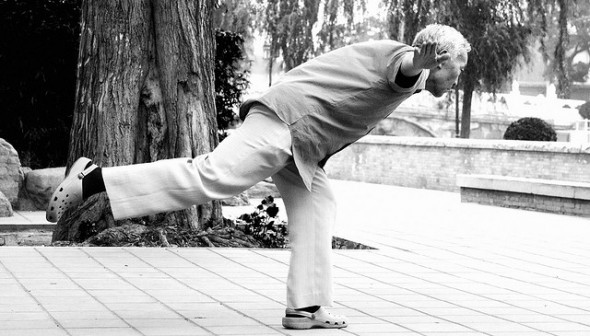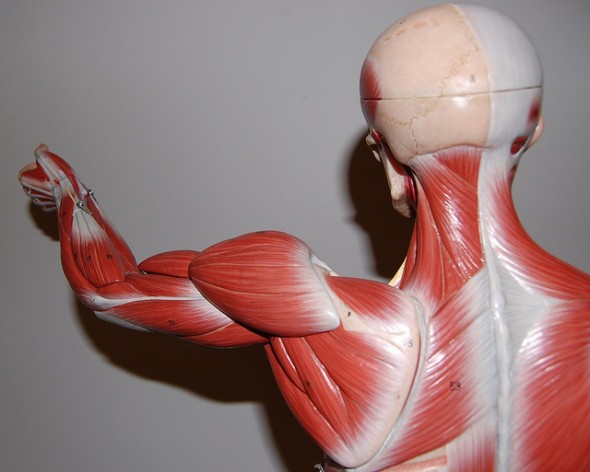Before we start actually lifting anything, the first thing we need to do is have a basic understanding of how our muscles work.
Our muscles are made up of many smaller muscle cells, more commonly known as muscle fibers. They’re long and cylindrical, and about the size of a single strand of hair. Muscle fibers are comprised of myofibrils surrounded by sarcoplasm.
We’ve got about 642 skeletal muscles, and they all work together to help our bodies move. For example, when you bend your arm, your bicep contracts and your tricep does the opposite (elongates) in order to let your elbow bend. Every muscle in your body works alongside the other.

We also have different types of fibers within our muscles, which help determine what type of training we respond best to.
The most common fiber types are:
- Slow twitch (or Type I fibers) are used for aerobic exercises where we need to convert oxygen into fuel over long periods of time. They are very resistant to fatigue, but do not move very quickly. These help for things such as running long distances.
- Fast twitch (or Type II fibers) fire very quickly, but also fatigue quickly, so they don’t last long. It gets a bit more complicated, because there are actually two types of fast twitch fibers. Type IIA fibers have some endurance qualities (used for things such as longer sprints). While Type IIX fibers are our “super fast” fibers, used only when a super short burst is needed (like a 100 m sprint or a really heavy lift).
Every person has a different percentage of fast twitch and slow twitch fibers, which is why some people tend to be naturally better at running distances than sprinting, or better at longer sets than short ones.
What is hypertrophy?

Most people believe that we can increase the amount of muscle fibers we have by weight training. In reality, we’re only born with a specific amount of muscle – by strength training, we don’t actually increase the number of muscle fibers, but we increase the size of them, increasing overall mass. This is called hypertrophy.
Now, there are a few types of hypertrophy. When someone normally just says “hypertrophy” they are most likely referring to sarcoplasmic hypertrophy.
- Sarcoplasmic hypertrophy focuses on increasing the amount of sarcoplasm, the non-contractile fluid found in your muscle. Up to 30% of your muscle’s size is attributed to the sarcoplasm, so focusing on this type of hypertrophy helps build overall size.
- Myofibril hypertrophy focuses on strengthening the myofibril, the contractile part of the muscle. In this type of hypertrophy, you are strengthening the actual muscle fiber, so it helps you build super dense, strong muscles.
- Transient hypertrophy is the temporary increase in muscle size that happens during and immediately after weight training due to fluid accumulation in the intracellular space, that you probably know as “the pump”.
So in summary, if you want to focus mainly on building super strong dense muscle, you want myofibril hypertrophy. If you only care about your muscles getting bigger, focus on sarcoplasmic. Transient hypertrophy is temporary and will appear alongside with both types.
When you strength train you’re basically doing two things to your muscles:
- Breaking down the muscle tissue so that your body will heal and rebuild the muscle back stronger. You see, our body hates being told it can’t do something. When you break down your muscle fiber it comes back stronger; when you try to do that thing again, it will succeed.
- As you start to increase the repetition (rep) range, you increase the glycogen storage in the muscle. This is where you get your increased size from.